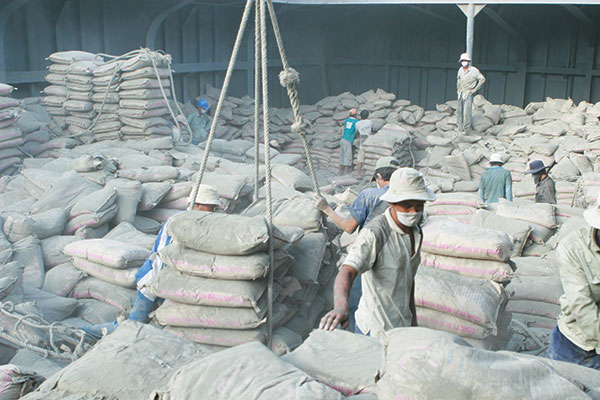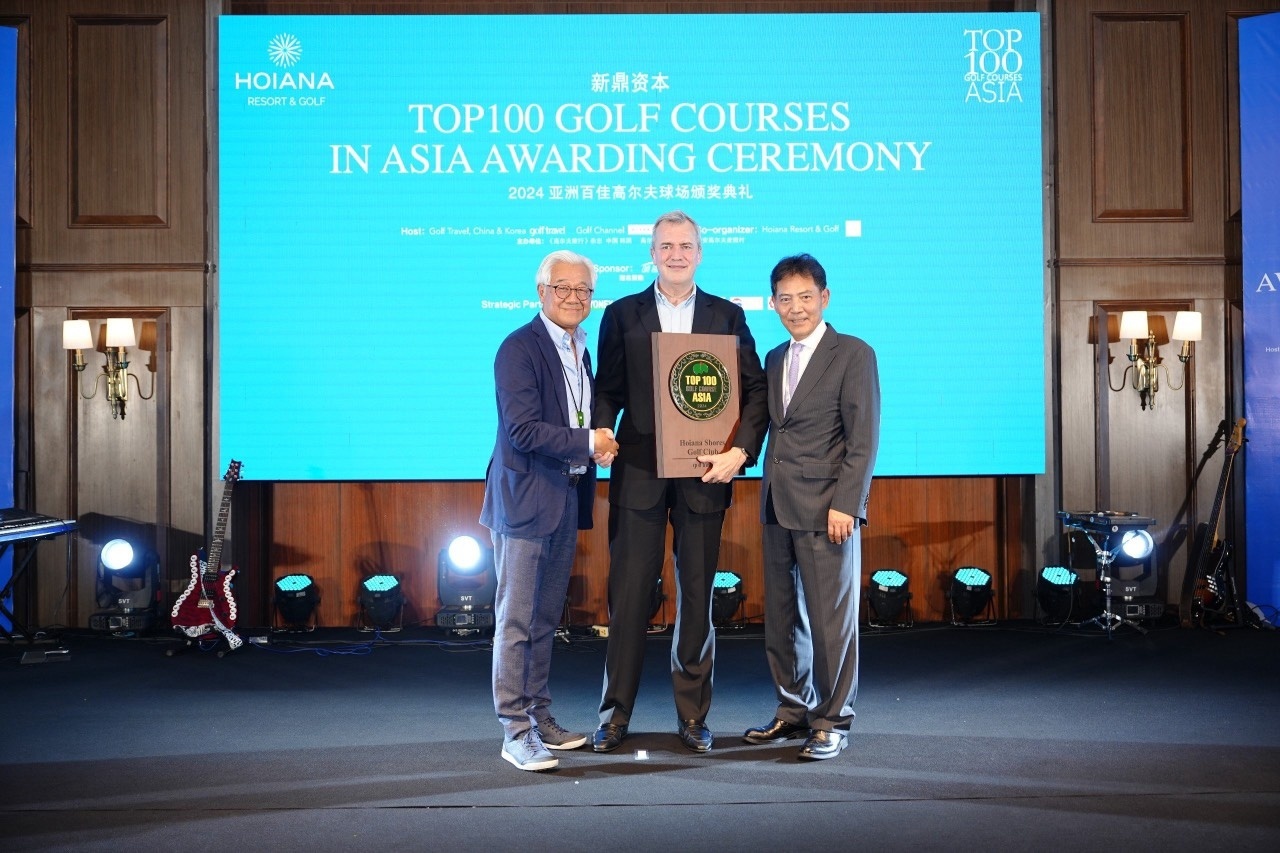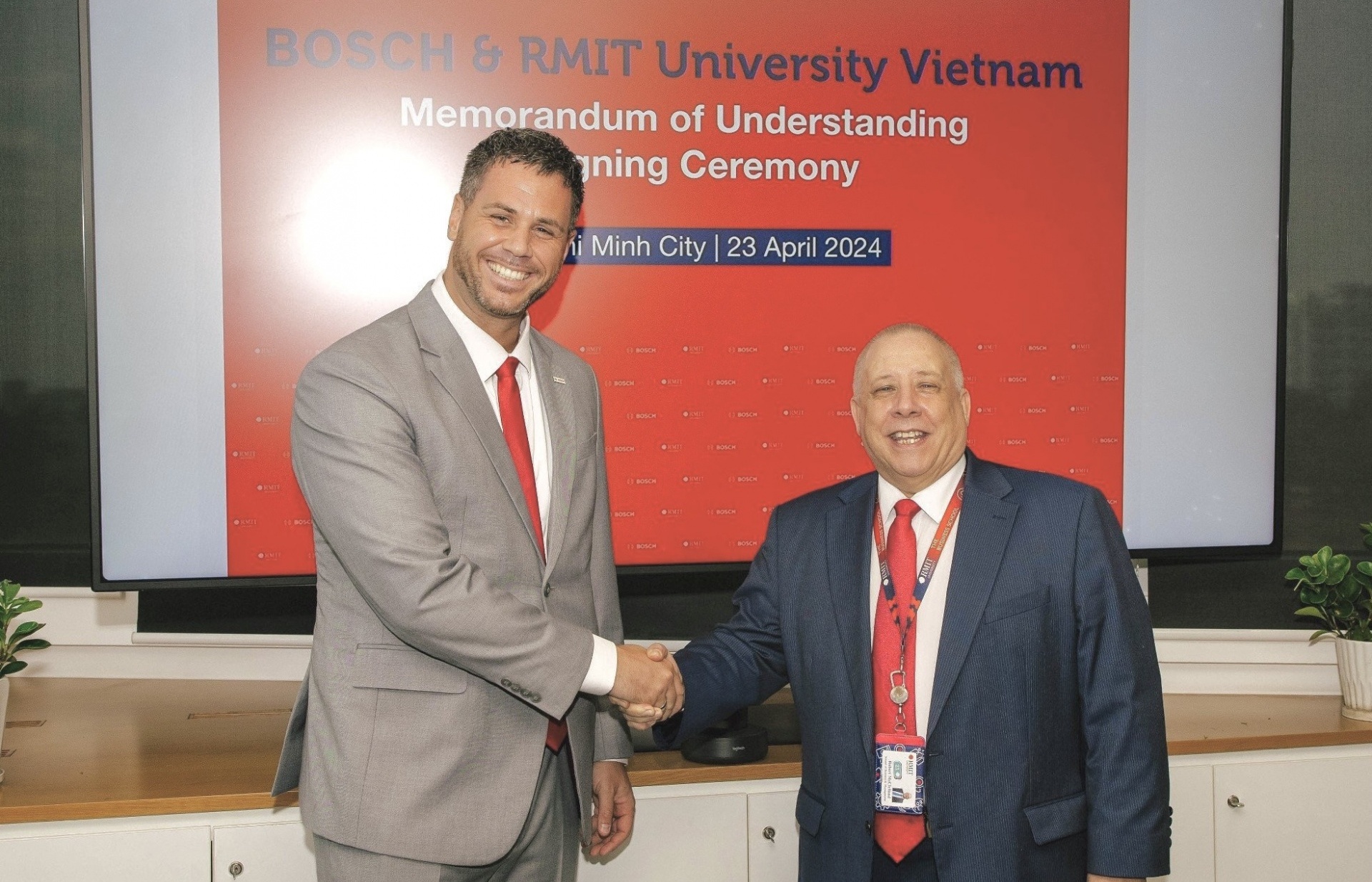Cement firms remain stuck

The outlook is bleak for Vietnam’s cement producers as years of oversupply is exacerbated by sinking demandPhoto: Le Toan
Total cement consumption in 2014 is estimated at 62-63 million tonnes, up 3 per cent against 2013. Of this, 48.5-49 million tonnes is to serve the domestic market and 13.5-14 million tonnes is for export, according to the Ministry of Construction’s latest forecast.
Assuming that consumption matches expectations and cement firms do not amend their capacity, about seven million tonnes will be overproduced, irrespective of another seven million tonnes set to be sourced from five new production lines to be commissioned in the second half of this year.
According to general director Hoang Xuan Vinh of Cam Pha Cement JSC based in northern province of Quang Ninh, huge oversupply and fierce competition among firms has required Cam Pha Cement to take creative measures, reform its sales methods, consolidate distribution and improve its management efficiency.
This year, the company has targeted sales of 1.7 million tonnes of cement in the domestic market while 650,000 tonnes of clinker are set for export, worth some VND2.7 trillion ($128 million) in total predicted revenue. “Our entire company will execute a wide range of measures from the early period of this year and will provide better support to customers to reach the set target,” Vinh said.
Cam Pha Cement, with more than VND6 trillion ($285 million) in total investment capital and 2.3 million tonnes in annual capacity, began operations in 2008 and incurred more than VND1.7 trillion ($81 million) in cumulative losses by mid-2013.
In October 2013, leading telecom group Viettel bought a 70 per cent stake in Cam Pha Cement, giving the company better hopes for the future.
Last year, the company reported VND2.3 trillion ($109 million) in revenue, up 10 per cent against 2012, and sold approximately 1.3 million tonnes domestically and shipped over 813,000 tonnes abroad. Despite these reasonable figures, the company still accumulated VND19 billion ($905,000) in losses since it had to pay interest payments of VND364 billion ($17.3 million) in addition to other financial costs.
This year, state cement conglomerate Vietnam Cement Industry Corporation (Vicem) set a 21 million-tonne target, producing 16-17 million tonnes of clinker, revenue of more than VND30 trillion ($1.4 billion) and profits of about VND500 billion ($23.8 million).
These targets were down on 2013 figures, revealing Vicem’s cautious approach.
Vicem’s subsidiaries were also liable for repayments on debts, with Vicem But Son JSC incurring over VND100 billion ($4.7 million) in losses since it had to deduct VND730 billion ($34.7 million) in investment cost repayments in addition to paying over $4.7 million due to exchange rate fluctuations.
Input costs also rose constantly last year, with coal price increasing 37-41 per cent from April and electricity growing 5 per cent from August.
In this context, cement firms have regarded export as a way to boost sales despite the lower profits.
Vicem said it would support member units in spurring exports to reach 2.6 million tonnes in cement and clinker export this year, up 300,000 tonnes over 2013.
Cam Pha Cement intends to surpass its one million tonne cement export target this year.
|
Substandard cement projects axed as demand decreases The government last week rejected nine substandard projects from its cement industry development plan for 2011-2020, with orientation towards 2030, according to the Vietnam Association for Building Materials. The scrapped projects include the Ha Tien-Kien Giang, Truong Son-Ro Li, Hop Son, Ngoc Ha, Vinafuji Lao Cai, Thanh Truong, Son Duong, Quang Minh and Cao Bang projects, each of which was planned to produce less than 2,500 tonnes of clinker per day. The decision came as the Association for Building Materials (ABM) forecast cement consumption in the domestic market would decrease 14-15 per cent against the levels projected during the state’s planning for 2011-2015. “Removing low capacity and ineffective cement projects from the cement industry plan is vital. It will bring significant changes and greener production practices into Vietnam’s cement industry as well as save power consumed by cement manufacturing amid Vietnam’s grave shortages of energy,” said Vu Ngoc Quy, deputy director of Taiwan’s Cement Chinfon Company, one of the biggest suppliers in Vietnam. Under the new cement plan, investors in new cement projects with a capacity of 2,500 tonnes of clinker per day must invest in waste heat recovery systems to generate power. Projects already in operation or under construction will also be forced to complete the investment in waste heat recovery systems before 2015, while additional plans will completely transform technology from blast furnaces to reverse furnaces with the gradual termination of outdated technology. Tran Van Huynh, chairman of the ABM added that besides extending deadlines and removing weak plants, cement firms also have to speed up their restructuring to increase competition. Current times have proven hard even for market leaders like state conglomerate Vicem, which consists of eight member companies and controls over 33 per cent of the market countrywide. “Each Vicem member should scale up efforts to maintain their traditional home markets since it will be difficult for firms to increase sales in new areas due to high transportation costs,” said Vicem general director Nguyen Ngoc Anh. Vietnam was estimated to encounter oversupply of 8-12 million tonnes of cement each year from 2010- 2012. The oversupply was a result of a mushrooming of cement factories in recent years. At present, Vietnam has 106 cement factories with total annual capacity of 63 million tonnes. The Ministry of Construction has estimated cement consumption will reach 62-63 million tonnes in 2014, a mere 1.5-3 per cent increase in comparison with 2013. It targets to export 14 million tonnes this year, equal to that of 2013. By Phuong Thu |
What the stars mean:
★ Poor ★ ★ Promising ★★★ Good ★★★★ Very good ★★★★★ Exceptional
Latest News
More News
- Localities on first step towards training microchip labour force (April 25, 2024 | 13:00)
- Agricultural produce seeks to conquer e-commerce market (April 25, 2024 | 10:15)
- Hai Long Construction's successful 25-year journey (April 25, 2024 | 08:00)
- E-commerce platforms help to spread agricultural value (April 25, 2024 | 07:30)
- Standard Chartered revises down Vietnam's 2024 GDP growth forecast to 6 per cent (April 24, 2024 | 15:04)
- Vincom Retail retains brand name following Vingroup divestment (April 24, 2024 | 15:00)
- Veterinary drugmakers seek time and cost-saving policies (April 24, 2024 | 11:36)
- Crucial small business arena to receive reduced CIT boost (April 24, 2024 | 11:12)
- Gaw Capital bets on “China plus one” opportunities in Vietnam (April 24, 2024 | 09:00)
- Softening demand to limit 2024 trade (April 24, 2024 | 08:00)
















 Mobile Version
Mobile Version